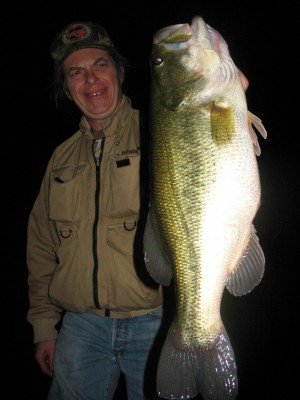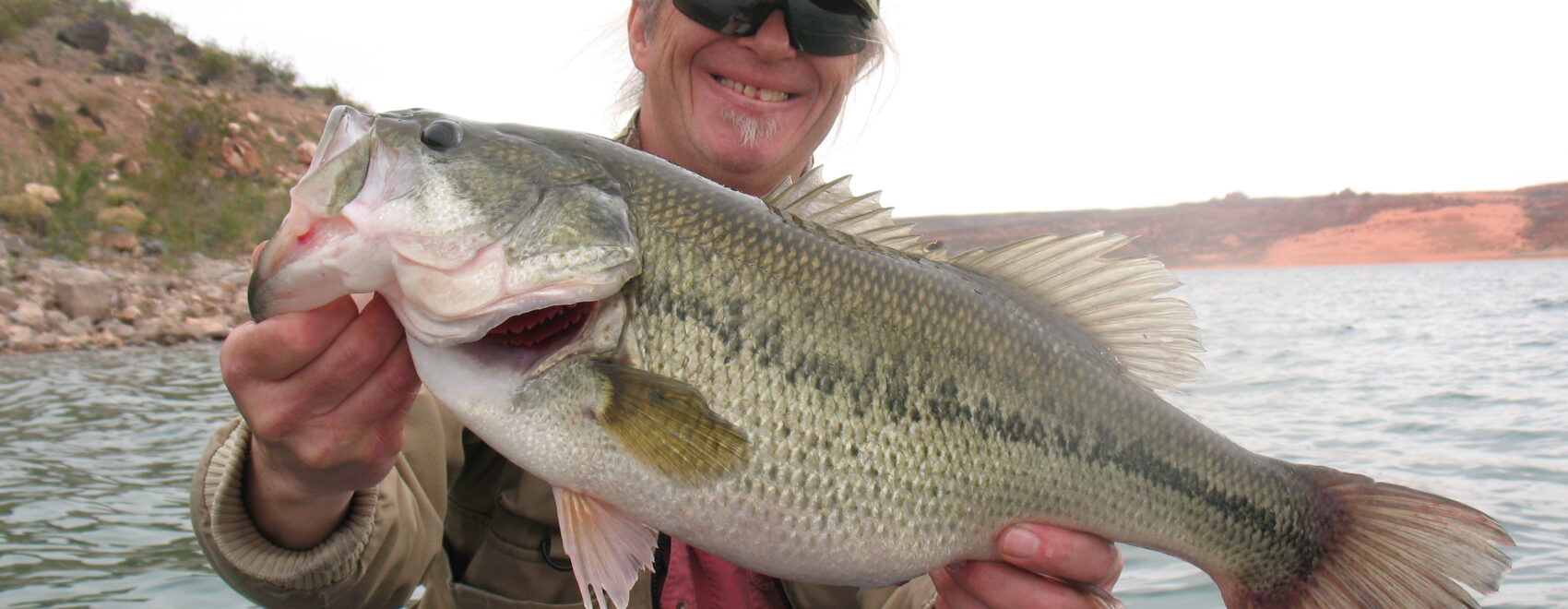
The first migrations of the late winter / early spring can be interrupted by multiple fronts and high wind conditions. This scenario forces migratory smallmouth and largemouth bass to be stacked vertically throughout the water column, as both groups of big fish and solitary giants make their way toward secondary staging locations.
Many trophy bass hunters experience good results with slower horizontal presentations during this early time frame until fronts arrive. The stacking bass factor seems to elude many, as bass tend to have a miniscule strike zone and are suspending. These groups of fish can be located in various depths through the water column and generally in neutral to negative mode.
Throughout the decades, I’ve seen this scenario every season and have made a habit of locating and triggering these fish to take vertical presentations. There will be short bite windows when these fish snap, and a variety of vertically presented baits, with the key factor being dead-sticking baits within a few inches of fish that are scattered at different depths. Targeting suspending fish that don’t move very far to chase baits and triggering these fish to bite can be quite satisfying and make your trip a success rather than having a slow day for big fish. Producing a few big fish on days when most anglers struggle will help gain confidence levels. I’ve always enjoyed targeting trophy bass during the toughest conditions and found that once you conquer these tactics, your season totals for out-size bass can double.
Locating stacked groups of bass is not difficult. Following the same migration routes that fish use to migrate from deep water basin areas throughout the spring, locate stacked fish that have stalled on these areas with your electronics and note the depths each group, or solitary fish that are suspending. Choosing from a specific group of baits for each depth is your starting point. Baits that can be most effective are straight vertical falling baits and baits the helicopter on the fall.
Weights of baits are crucial and must be determined by wind velocity, weather elements, and rate of fall. In calmer conditions, I’ll drop lighter weight baits on lighter lines when bass activity levels demand a super slow drop to trigger obstinate giants. Staying on these stacked bass and repeating a variety of presentations is a key to triggering these fish. Set out markers to mark location zones and always set the GPS to return to each group of these fish throughout the day or night, as activity levels will vary.
I choose from a select group of baits including: Blade Baits, Jigging Spoons, Short-arm Spinnerbaits, slow falling plastics in baitfish profiles, drop shot rigs rigged to exact locations of suspending stacked fish, bladed swim jigs (fished vertically), Fluke style baits and Float n’ Fly rigs. The primary factor here is to see if fish will inhale a slow falling bait, or if baits must be dead-sticked on the nose of fish for lengthy periods of time. I usually start by dropping baits through these groups of stacked bass at various rates of speed.
When these fish are at their maximum activity level, they will inhale baits dropped through them at a medium slow rate of fall. This would be at their maximum activity level during very short bite windows. Switching to lighter line, down-sizing baits and dead-sticking are the next step in presentation. One truly effective presentation, particularly for smallmouth bass, is to drop a fluke style bait down only 12 to 20 feet or so, depending on stacked fish location in the water column, and dead-sticking the bait. The instinctual aggressive nature of smallies combined with the fact that they are usually looking up when feeding on forage can trigger subtle to aggressive bites depending on activity level mode.
This presentation also works for Largemouths, but neutral to negative largemouth won’t move as far to take these baits. Baits must be placed closer to the smaller strike zone to trigger stacked neutral largemouth bass. Running a rod in a rod holder with this presentation and working a different speed vertical presentation with rod in hand, will coincide with varying activity levels and depict the most effective presentation.
Locations for stacked bass can vary depending on depth of the body of water your fishing, exact time of the year, water temperature, specific weather elements and barometric pressure fluctuation. Fish that were locating in shallower depths will be the most effected by post-front situations and barometric change. In areas with close proximity to deep basin zones, such as steep ledges, cliff areas, and any zones that drop off quickly, stacked bass can be locating relatively close to shore at depths from 20 to 60 feet or more.  During the cold water periods such as Late Winter / Early Spring and Mid to Late Fall, the majority of stacked bass can be found off shore in basin zones or locating near pelagic structural elements.
During the cold water periods such as Late Winter / Early Spring and Mid to Late Fall, the majority of stacked bass can be found off shore in basin zones or locating near pelagic structural elements.
During Fall Turnover, look for bass locating on, or near, large forage pods closest to areas that contain the most oxygen. During mid-turnover bass, vacate all zones depleted of oxygen. This time of the season usually finds a large percentage of the bass population suspending anyway, but during drastic post-front times, bass tend to stack with more frequency. Although not as affected by quick barometric change, deep main lake basin bass will still have a tendency to stack, especially during times of fast dropping water levels and forage consolidation. These bass, during this time of the season are more willing to commit to horizontal presentations also. Ripping and pausing baits for extended periods of time is recommended. I use a combination of the same vertical presentations aforementioned combined with ripping and dead-sticking horizontal tactics during the warmer temperatures of summer, turnover and early to mid fall. During specific warmer water temperatures and during fall turnover, there are times when off-shore stacked bass will rise to take wake-baits, shallow running swimbaits and other topwater baits when retrieved with extensive pauses and dead-sticking tactics. During short bite windows and activity level increase, Largemouth, smallies and spotted bass can often tend to rise to the occasion.
The stacked bass factor occurs annually and frequently throughout the entire season. Locating these fish and spending the time working on effective presentations and experimentation with a variety of baits will increase your productivity throughout the year and will add another dimension to your big bass arsenal on the majority of waters across the country.
By Brett Richardson

